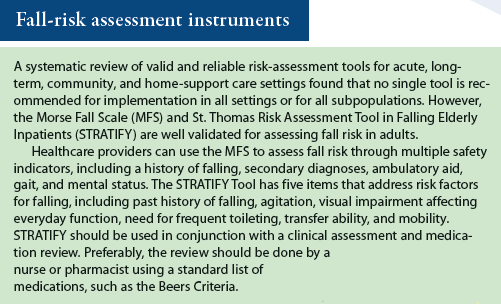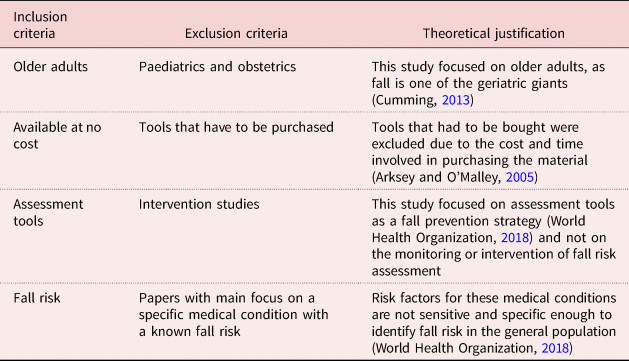Get This Report about Dementia Fall Risk
Get This Report about Dementia Fall Risk
Blog Article
The 9-Minute Rule for Dementia Fall Risk
Table of ContentsThe Ultimate Guide To Dementia Fall RiskDementia Fall Risk Things To Know Before You Get ThisThe Buzz on Dementia Fall RiskSome Known Incorrect Statements About Dementia Fall Risk Dementia Fall Risk Can Be Fun For Everyone
The FRAT has three areas: fall threat status, danger aspect list, and activity plan. A Loss Threat Standing consists of information regarding background of recent falls, drugs, psychological and cognitive standing of the person - Dementia Fall Risk.If the individual ratings on a risk aspect, the equivalent number of factors are counted to the individual's loss threat score in the box to the much. If an individual's loss risk rating amounts to 5 or higher, the person is at high threat for drops. If the person ratings only four points or reduced, they are still at some danger of falling, and the registered nurse needs to use their best clinical assessment to take care of all loss danger elements as part of a holistic care plan.
These basic approaches, generally, aid establish a risk-free environment that decreases unexpected drops and delineates core preventive measures for all patients. Signs are essential for clients at danger for falls. Health care providers need to recognize who has the problem, for they are accountable for executing activities to promote client safety and security and protect against drops.
Unknown Facts About Dementia Fall Risk
For example, wristbands should consist of the patient's last and initial name, date of birth, and NHS number in the UK. Information need to be printed/written in black versus a white background. Only red shade needs to be utilized to signify special person condition. These referrals are consistent with present advancements in patient recognition (Sevdalis et al., 2009).
Items that are also much may call for the individual to connect or ambulate needlessly and can potentially be a threat or contribute to falls. Aids prevent the patient from heading out of bed with no support. Nurses react to fallers' telephone call lights much more promptly than they do to lights started by non-fallers.
Aesthetic impairment can substantially create falls. Hip pads, when put on appropriately, may minimize a hip fracture when fall takes place. Maintaining the beds closer to the flooring decreases the danger of drops and major injury. Putting the mattress on the floor considerably minimizes autumn danger in some medical care setups. Low beds are made to decrease the range a person falls after moving out of bed.
3 Simple Techniques For Dementia Fall Risk
Patients that are tall and with weak leg muscles that try to sit on the bed from a standing placement are most likely to fall onto the bed because it's also reduced for them to reduce themselves safely. Likewise, if a tall patient attempts to get up from a go to my blog low bed without assistance, the individual is most likely to fall back down onto the bed or miss out on the bed and drop onto the floor.
They're made to promote prompt rescue, not to prevent drops from bed. Aside from bed alarms, enhanced supervision for risky people likewise might aid stop falls.

People with an evasion gait rise autumn possibilities substantially. To minimize loss risk, shoes should be with a little to no heel, thin soles with slip-resistant walk, and support the ankles. Suggest person to use nonskid socks to stop the feet from moving upon standing. However, motivate patients to use ideal, well-fitting shoesnot nonskid socks for motion.
The Dementia Fall Risk Diaries
People, particularly older grownups, have actually decreased aesthetic capacity. Illumination a strange environment helps raise exposure if the person need to obtain up at evening. In a research study, homes with adequate lighting report fewer falls (Ramulu et al., 2021). Renovation in lights at home may minimize autumn rates in older adults (Dementia Fall Risk). Using gait belts by all healthcare providers can promote safety when assisting individuals with transfers from bed to chair.

Caretakers are efficient for guaranteeing a safe and secure, protected, and safe setting. Nevertheless, research studies showed really low-certainty evidence that sitters reduce autumn danger in intense treatment hospitals and just moderate-certainty that options like video tracking can minimize caretaker use without boosting autumn danger, recommending that sitters are not as valuable as originally believed (Greely et al., 2020).
All about Dementia Fall Risk

Boosted physical conditioning reduces the risk for drops and limits injury that is suffered when loss takes place. Land and water-based exercise programs may be likewise beneficial on equilibrium and stride and therefore lower the risk for falls. Water exercise may contribute a positive advantage on balance and stride for women 65 years and older.
Chair Increase Exercise is a basic sit-to-stand exercise that aids strengthen the muscles in the upper legs and butts and improves movement and independence. The goal is to do Chair Rise exercises without using hands as the customer comes to be stronger. See sources section for an in-depth instruction on how to carry out Chair Increase workout.
Report this page